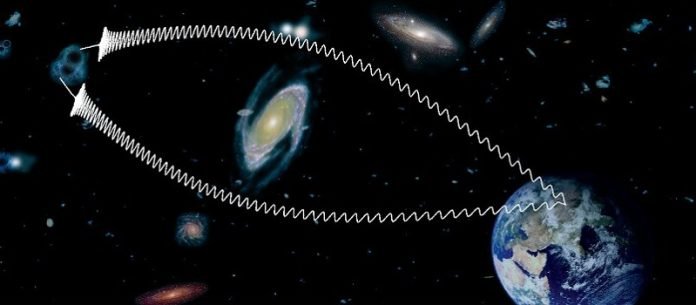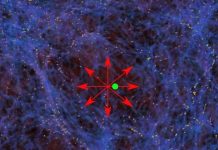
Have you ever wondered how quickly our universe is growing?
For nearly a century, scientists have known that the universe is expanding, or spreading out.
However, just how fast everything is moving apart from one another is still a hot topic of debate among scientists.
This might sound a bit complicated, but bear with me. Imagine the universe as an enormous 3D grid, and the numbers representing the rate of the universe’s expansion range from 67.4 up to 76.5.
This means that for every million parsecs (a unit to measure huge cosmic distances) you move away from a point in the universe, everything seems to be moving at a speed of 67.4 to 76.5 kilometers per second faster.
Yes, that’s incredibly fast!
This disagreement in measurements is known as the “Hubble tension.” Some even consider it a crisis. However, for astrophysicist Tejaswi Venumadhav Nerella and his research team, it’s more like a grand puzzle to be solved.
In 2015, scientists made the first-ever detection of something called gravitational waves. These waves are caused by extremely massive objects, like black holes or neutron stars, colliding with each other and sending ripples across the fabric of space-time.
Kind of like throwing a stone in a pond and watching the waves spread out. Since then, we’ve improved our gravitational wave detectors a lot and expect to detect more of these events in the future.
The key to understanding the expansion of the universe lies in how we measure distance and speed. Scientists use objects of known size (like “standard rulers”) or brightness (known as “standard candles”) to measure distances. For instance, the brighter a distant star appears, the closer it is to us. Gravitational waves are helpful here, too. The energy they release can tell us how far the colliding objects are.
Here’s the exciting part: Nerella and his team propose a new way to measure the universe’s expansion using something called gravitational lensing.
Big objects like galaxies can bend and distort these gravitational waves, creating multiple versions of the same signal that reach us at different times. By studying the delay between these signals, the team believes they can calculate the rate of the universe’s expansion.
How cool is that? We’re using black hole collisions and their gravitational ripples to measure how fast the universe is growing!
So far, we haven’t spotted any of these multiple-signal events, but Nerella and his team believe the next generation of detectors should be sensitive enough to do so.
The team expects to start searching for black hole mergers within the next ten years. Out of millions of detected signals, a small portion will be these lensed events. By studying the delay in these signals, we could finally resolve the “Hubble tension.”
Not only that, but these observations could also give us a better understanding of the mysterious dark matter, the invisible stuff that makes up a massive part of our universe. All in all, it’s an exciting time in the world of astrophysics, and who knows what we might discover next?
The paper was published in Physical Review Letters.



